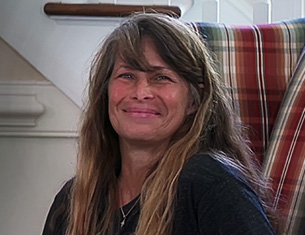Publisher's note: The article below appeared in John Hood's daily column in his publication, the Carolina Journal, which, because of Author / Publisher Hood, is inextricably linked to the John Locke Foundation.
RALEIGH Judging by the extent and intensity of media coverage, policymakers in North Carolina and elsewhere ought to be devoting significant attention to combating the burgeoning problems of gun violence, highway safety, and workplace accidents.
By which I mean to say: never base your judgment on the extent and intensity of media coverage.
Americans are, on average, living far safer lives than their ancestors did. More generally, we are living in one of the safest periods of time in the history of the human race. Death rates from accidents and communicable disease are historically low and dropping. Death rates from battlefield wounds, private guns fired in anger, or other forms of violence are dropping, too, but there is more debate about whether the current rates are historically low. (I tend to trust
Steven Pinker on this question.)
I'm about to give you several U.S. examples. Keep in mind, however, that for every death averted by one cause, raw data will show an additional death by another cause. Life has a 100 percent mortality rate. To depict meaningful trends in human safety, you have to use measures such as life expectancy, years of life saved, or age-adjusted mortality rates. Why are deaths from some chronic diseases higher than they used to be? Because we have to die of something, preferably later rather than sooner.
Here are some trend lines to consider from a recent
Centers for Disease Control report:
• The American age-adjusted death rate in 2008 was 758 per 100,000 population. That's down nearly half from the 1950 rate of 1,446 per 100,000.
• For accidental deaths alone, the rate dropped from 102 in 1950 to 54 in 2008. Within that category, the motor-vehicle death rate dropped from 39 in 1950 to 19 in 2008. Measured another way, in relationship to vehicle miles traveled, the rate of traffic fatalities is
the lowest ever recorded in the United States.
• The U.S. homicide rate actually rose during the first half of the period, from about 8 per 100,000 in 1950 to nearly 17 per 100,000 in 1980. By the late 1980s, it had started to fall. The 2008 rate was 9.3, and violent deaths have dropped further since then.
The causes for these long-term safety improvements are many and complex. Past government regulations have played a role, certainly, but not as much as you might think. Occupational safety, for example, was
improving at about the same rate before the creation of the Occupational Safety and Health Administration in 1971 as it improved since then. Another indicators show similar trends.
Activities get increasingly safer for a host of reasons. The more people do things, the better they do them. This rule applies to driving, operating machinery, or making consumer products. There are also significant non-regulatory costs associated with accidental injuries and deaths, such as higher insurance premiums, lost wages, lost production, and replacement costs. In fact, these costs typically far exceed the potential fines from violating a safety regulation. They are strong motivations for taking precautions. Not everyone responds effectively to these prospects for loss, but most people do most of the time.
As for gun violence, the trend lines appear to reflect other dynamics - such as the market for illicit drugs, the treatment of mental illness, and the overall culture of aggression in a particular place - more than the availability of legal guns. Policies such as "assault weapons" bans appear to have little relationship with rates of gun violence.
Every life is precious, of course. Every life cut short by accident or violence is a tragedy. But horrific events such as the Sandy Hook shooting or teenagers killed by texting while driving are shocking because of the familiar settings involved and newsworthy precisely because they are rare. Fashioning public policies with real costs in dollars, economic growth, and personal liberty in response to rare, low-probability events is foolish and counterproductive.
In other words, it's the kind of thing that politicians naturally do. That doesn't mean we have to go along with their faulty risk analysis when there are
truly pressing problems to address.


























